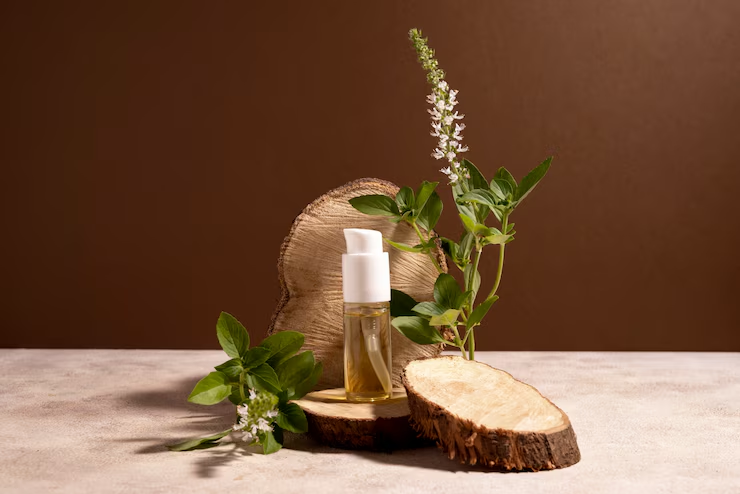In the ever-evolving beauty industry, terms like clean beauty and organic beauty are often used interchangeably, but they represent distinct concepts. Understanding the difference between clean vs. organic beauty is essential for making informed choices about the products you use. This guide will break down their definitions, benefits, and key differences while helping you navigate the beauty aisle with confidence.
What Is Clean Beauty?
Clean beauty refers to products formulated without harmful or questionable ingredients. These products avoid toxins such as parabens, sulfates, phthalates, synthetic fragrances, and other potentially harmful chemicals. The focus of clean beauty is on safety, transparency, and non-toxic formulations.
Key Features of Clean Beauty:
-
Free from harmful chemicals
-
Transparent ingredient labeling
-
Often cruelty-free and eco-conscious
-
May include synthetic ingredients if deemed safe
Brands that promote clean beauty prioritize consumer health and environmental sustainability, though they may not always use natural or organic ingredients.
What Is Organic Beauty?
Organic beauty products are made with ingredients grown without synthetic pesticides, fertilizers, or genetically modified organisms (GMOs). These products must meet strict certification standards (like USDA Organic, COSMOS, or Ecocert) to be labeled as organic.
Key Features of Organic Beauty:
-
Made with at least 95% organic ingredients (depending on certification)
-
Free from synthetic pesticides and GMOs
-
Environmentally sustainable farming practices
-
Often paired with natural and cruelty-free standards
Unlike clean beauty, organic beauty emphasizes the sourcing and farming of ingredients rather than just excluding harmful chemicals.
Clean vs. Organic Beauty: Key Differences
While both clean and organic beauty promote healthier skincare and cosmetic choices, they differ in several ways:
| Aspect | Clean Beauty | Organic Beauty |
|---|---|---|
| Focus | Non-toxic, safe ingredients | Naturally grown, pesticide-free ingredients |
| Certification | No universal standard; brand-dependent | Requires strict organic certifications |
| Ingredients | May include safe synthetics | Primarily organic and natural ingredients |
| Transparency | High, with clear labeling | High, with certification seals |
1. Ingredient Standards
-
Clean beauty avoids harmful chemicals but may use lab-made ingredients if they are safe.
-
Organic beauty relies on naturally derived, farm-grown ingredients with minimal processing.
2. Certifications
-
Clean beauty lacks a universal certification, so brands self-regulate.
-
Organic beauty requires official certifications (e.g., USDA Organic, Ecocert).
3. Environmental Impact
-
Clean beauty focuses on reducing toxins that harm both users and the environment.
-
Organic beauty supports sustainable farming and reduces pesticide pollution.
Benefits of Clean Beauty
Choosing clean beauty products offers several advantages:
-
Reduced exposure to toxins – Lowers risk of skin irritation and long-term health effects.
-
Better for sensitive skin – Free from common irritants like synthetic fragrances.
-
Ethical sourcing – Many brands prioritize cruelty-free and eco-friendly practices.
Benefits of Organic Beauty
Opting for organic beauty comes with its own perks:
-
Higher nutrient content – Organic plants often retain more beneficial compounds.
-
Eco-friendly production – Supports biodiversity and reduces chemical runoff.
-
Strict quality control – Certified organic products undergo rigorous testing.
Can a Product Be Both Clean and Organic?
Yes! Many brands combine the principles of clean and organic beauty, offering products free from toxic ingredients while using certified organic components. Look for labels like “clean organic beauty” or check for dual certifications.
How to Choose Between Clean and Organic Beauty
When deciding between clean vs. organic beauty, consider:
-
Your skin’s needs – Sensitive skin may benefit more from clean beauty, while those seeking natural nutrition might prefer organic beauty.
-
Environmental concerns – If supporting sustainable farming matters, organic beauty is ideal.
-
Budget – Organic beauty products are often pricier due to certification costs.
Misconceptions About Clean and Organic Beauty
-
Myth: “Natural means safe.”
-
Fact: Even natural ingredients can cause allergies or irritation.
-
-
Myth: “Organic products are always clean.”
-
Fact: Some organic products may still contain allergens or irritants.
-
-
Myth: “Clean beauty is just a marketing trend.”
-
Fact: Growing research supports the benefits of non-toxic skincare.
-
Top Clean and Organic Beauty Brands
If you’re exploring clean vs. organic beauty, here are some trusted brands:
-
Clean Beauty Favorites: Beautycounter, Drunk Elephant, Tata Harper
-
Organic Beauty Standouts: Juice Beauty, 100% Pure, Earth Mama Organics
Final Thoughts: Clean vs. Organic Beauty
The debate between clean vs. organic beauty isn’t about which is better—it’s about what aligns with your values and skin needs. Clean beauty prioritizes safety by avoiding toxins, while organic beauty emphasizes natural, sustainably sourced ingredients. By understanding these differences, you can make empowered choices for a healthier beauty routine.
Key Takeaways:
-
Clean beauty = non-toxic, synthetic-free (when harmful)
-
Organic beauty = certified natural, pesticide-free ingredients
-
The best choice depends on personal preference, skin type, and ethical considerations
Whether you choose clean beauty, organic beauty, or a mix of both, the most important factor is selecting products that are safe, effective, and aligned with your wellness goals.
By now, you should have a clear understanding of clean vs. organic beauty—so go forth and curate a beauty regimen that’s as pure as your intentions!

Leave a Comment